by yaska77
The nights are certainly closing in quickly now, and although that confirms summer is most definitely over it also means more hours of darkness for astronomy and sky-watching!
There are some nice events this month to get you outdoors, but if all else fails the annual Orionid meteor shower nearly coincides with the new Moon, so skies should be nice and dark so get out looking for those shooting stars! If the clouds stay away that is…
Keep watching the skies!
Wednesday 1st October – This evening the Moon can be seen at First Quarter phase
Monday 6th October – The Moon is at Perigee today at a distance of 362,480 km (225,235 miles), the closest point of its orbit to the Earth
Tuesday 7th October – Uranus is at Opposition in the constellation Pisces today, so will rise at sunset and set at sunrise. If you’re trying to spot it though it will be close to the near Full Moon!
Wednesday 8th October – The October Full Moon seen today is also sometimes known as the Hunter’s Moon, Blackberry Moon or Blood Moon
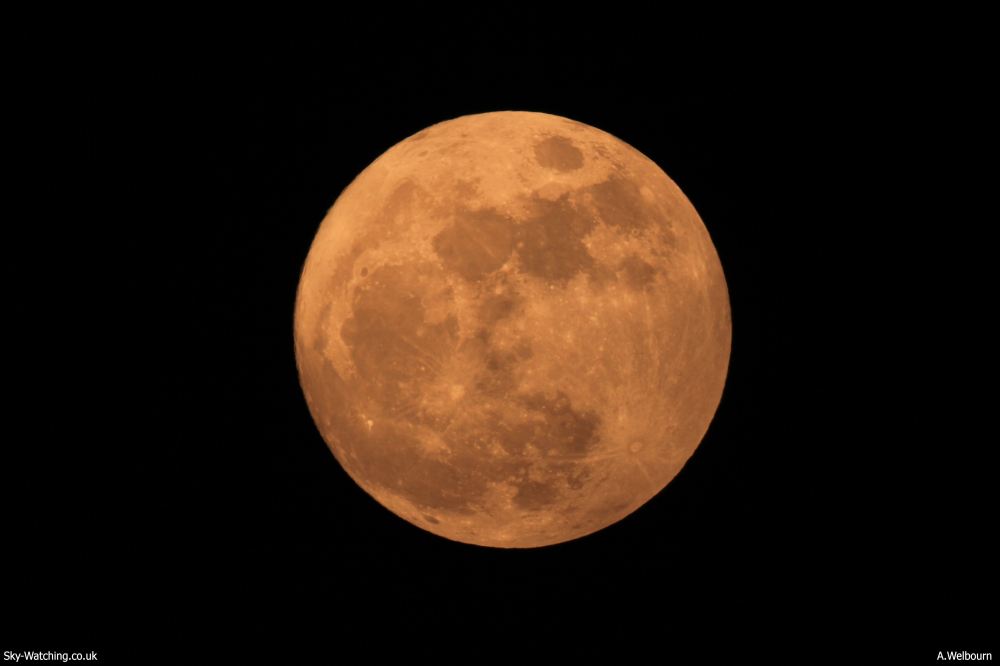
Wednesday 15th October – This evening our Moon will be seen at Last Quarter phase
Thursday 16th October – Today Mercury is in Inferior Conjunction so is currently unobservable. It will return as a pre-dawn object towards the end of the month
And to help identify the constellations you can see throughout the month, below we’ve provided guide images for both southern and northern skies in October (shown as seen at 00:00 UTC (01:00 BST) on 16th October)
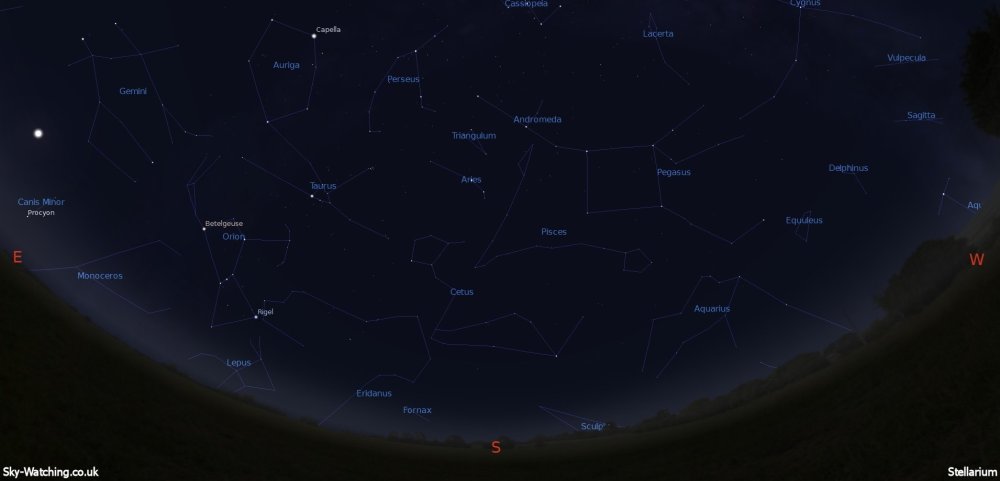
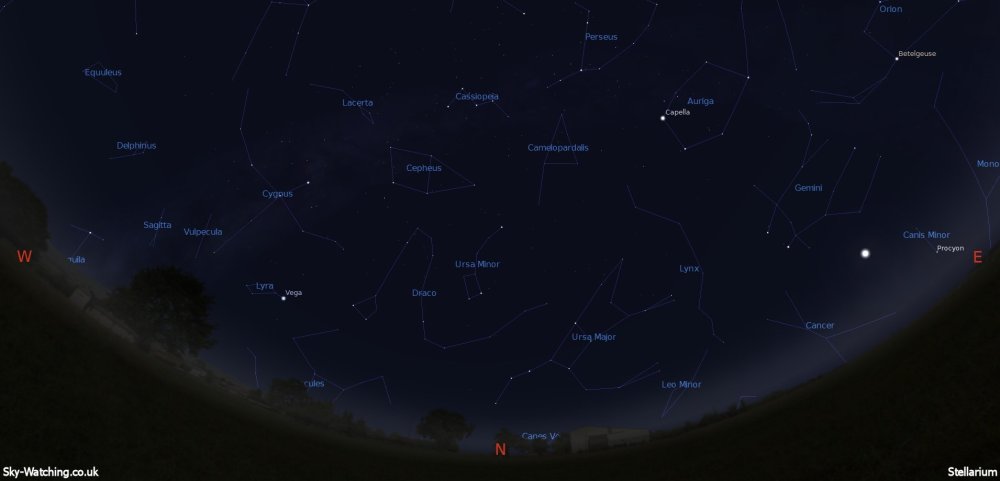
Saturday 18th October – Those who rise early (or go to bed late!) will see Jupiter visited by the crescent Moon this morning (shown below at 03:00 UTC / 04:00 BST). Close encounters like these often prove great targets for you astrophotographers!
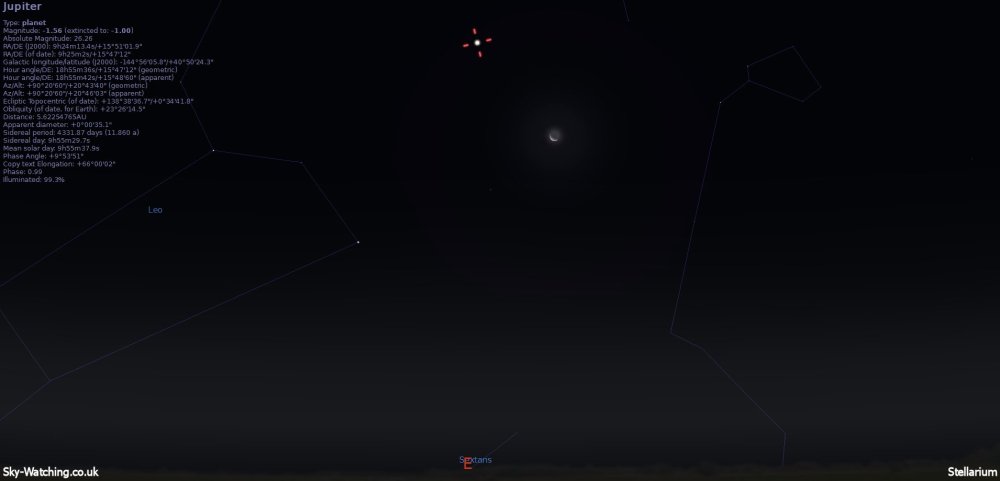
Today the Moon is at Apogee at a distance of 404,895 km (251,591 miles) the furthest point out in its orbit around the Earth this month
Tuesday 21st October – An annual Orionid meteor shower peaks during the early hours of this morning (best from midnight through until dawn). To locate the radiant, find the constellation Orion in the sky and the radiant is just up and to the left
While the radiant can help you determine the direction the meteors will seem to emanate from they’ll appear all over the sky, so get out and crane your necks!
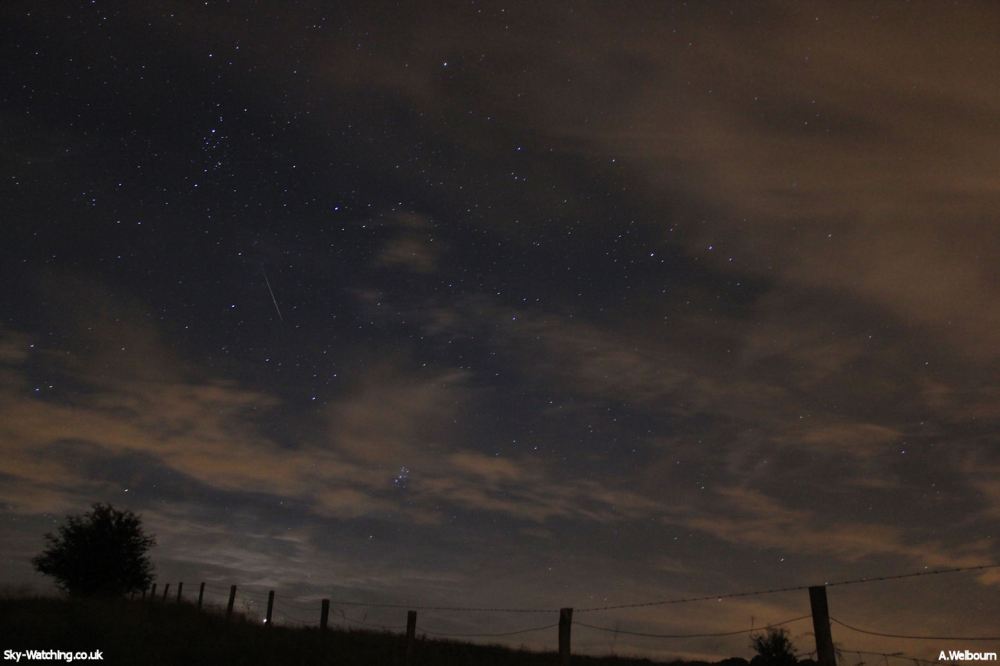
The ZHR is expected to be around 25 per hour at peak, and with the new Moon just days away the skies will be dark enough to put on a good show
Thursday 23rd October – The New Moon rises with (and sets just after) the Sun today, so now is a good time to observe deep sky objects when the skies are unaffected by moonlight
Friday 24th October – With earlier darker skies now is a great time to look for the fainter objects of astral beauty, like galaxies and nebulae! With the Moon also currently out of the way why not take the opportunity to seek out the Andromeda galaxy?
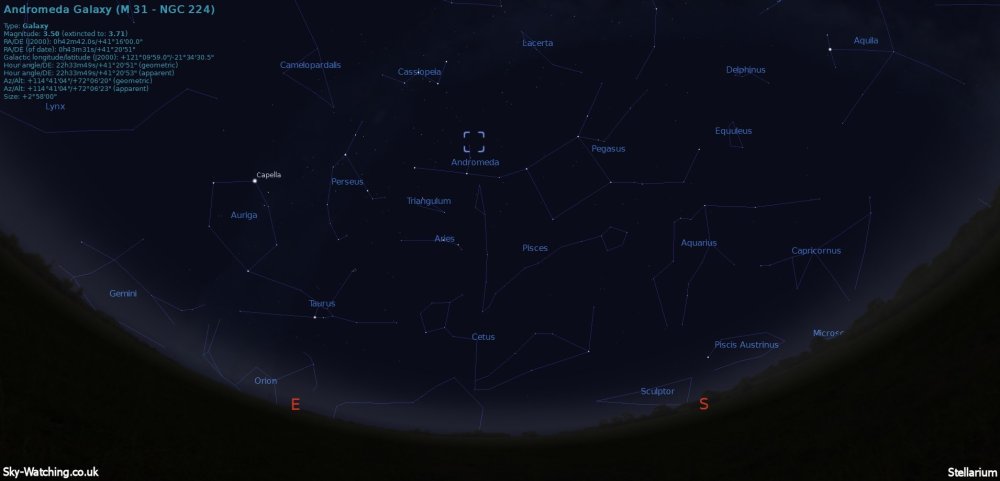
Under average skies it will appear like an elliptical smudge, but with darker skies and a good pair of binoculars or a telescope, you can see the dust lanes forming the disc! We’d love another go at imaging Andromeda, so fingers crossed for some decent nights viewing this month!
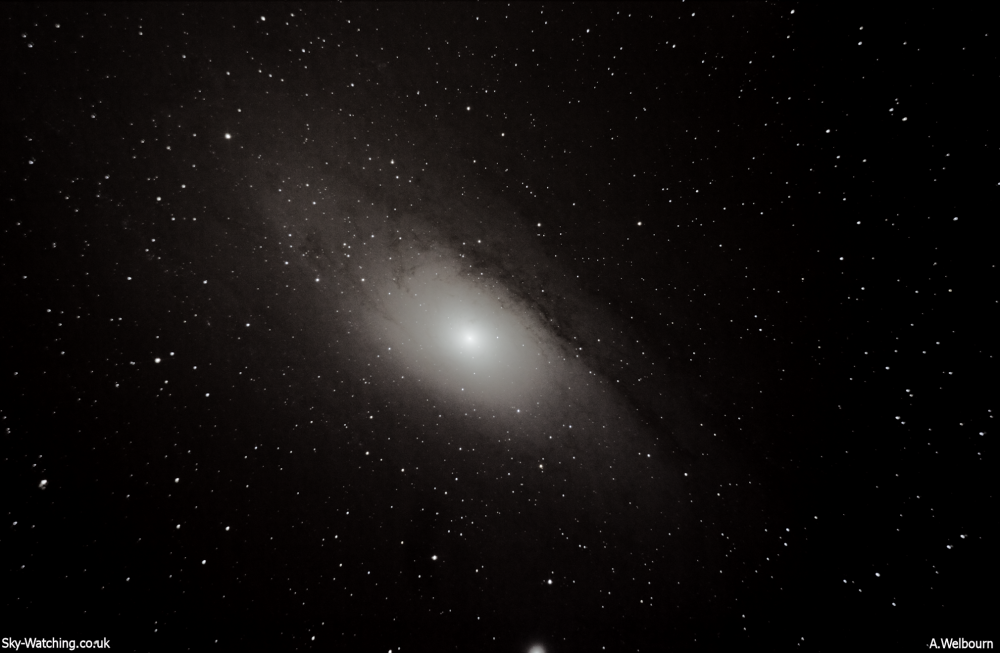
Saturday 25th October – Bright planet Venus is in Superior Conjunction today
Sunday 26th October – British Summer Time ends in the UK, and clocks go back one hour at 02:00 BST (to 01:00 GMT/UTC)
As usual, if you take any photos throughout October you’d like to show us, please tweet them to us using the link below! We’d love to see your efforts and we’ll re-tweet them to your fellow sky-watchers!
Planets visible this month:
Jupiter
Mars
Mercury
Saturn
Neptune
Uranus
Remember, it can take your eyes up to 20 minutes to become properly dark adapted, and anything up to an hour for a telescope to reach ambient temperature outside (to ensure the best image), so give yourself plenty of time to get set up!
To make it easier to find this list of astronomical happenings you can also locate it in the “Monthly Guide” section in the menu bar to the right. Handy! 🙂
Guide images created with Stellarium
Archive:
Astronomy Events – September 2014
Astronomy Events – August 2014
Astronomy Events – July 2014
This month is going to be awesome! I’m excited about October’s astronomical events. It’s always been my favorite month but this time it’s going to be phenomenal! 🙂
LikeLike
Reblogged this on the eclectic pathway and commented:
All astronomy events are awesome!
LikeLike
Reblogged this on The Journey and commented:
wonderful
LikeLike